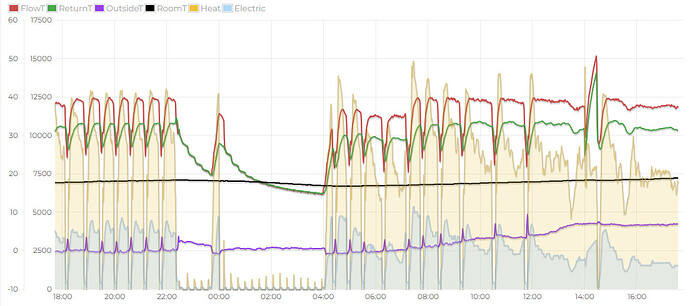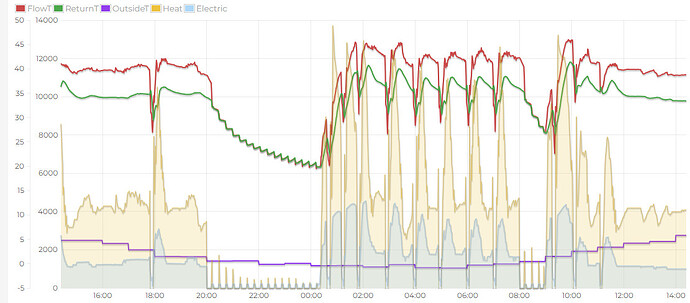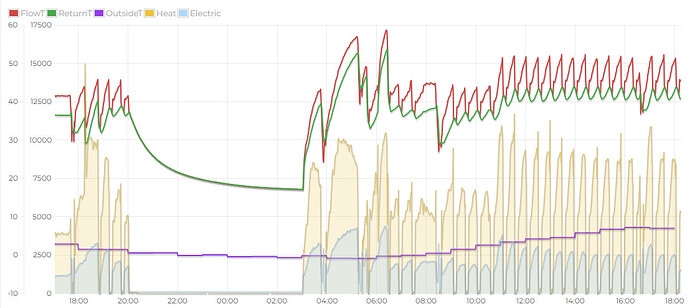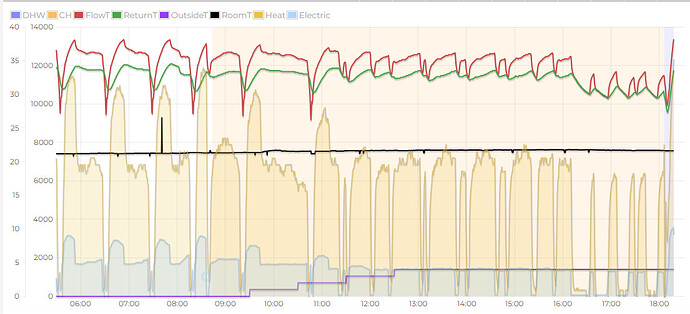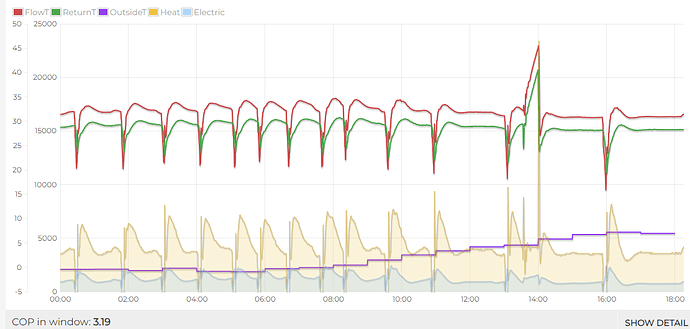I was hoping my Daikin would perform better this Winter with a full suite of well sized radiators and set up sorted out but I was disabused yesterday when it cycled as rapidly as it has ever done. … and just at zero c and not much lower. Humidity was not that high - around 80% so in line with the standards - seemingly destroying my theory that saturated air was the cause of the problem. The unit was driven to it’s limit of output as my house was warming up from 11c after we had been away for the week. I’m still only getting 7.5kw max when it goes into rapid defrost mode - you can see from the above how the defrost periods increase as the outside temp climbs in the morning.
The bottom line is that my ‘10.6’ kw model can run with a COP of up to 5 at 10c - producing 4.5kw without cycling but that can only increase to 7.5kw due to defrost cycling at zero c. Not much of a useful range when it is not cycling one way or another. The defrost is obviously needed when I look at the snowball created at the end of the 30 mins… so it is not over cycling as far as I can see.
I see that another 9kw Altherma near to me in Farnborough had a similar cycling issue albeit with longer 1 hr periods and a lower output - presumably it wasn’t being pushed as hard as mine.
And another nearby in Fleet had the same fast cycle time as mine.
The Cambridgeshire Grant Aerona is doing something similar
As is the 7kw Vaillant in Rushden
Once again this suggests to me that if you calculate that you need an output of X at say -2c then you need to buy a heat pump with a stated capacity of about 1.33 X in order to really produce what you need it to produce in freezing conditions.
